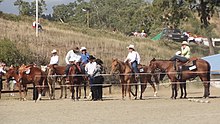
New Caledonia is a group of islands in the southwest Pacific Ocean, 220 km (140 mi) southwest of Vanuatu and 1,210 km (750 mi) east of Australia. Located 16,100 km (10,000 mi) from Metropolitan France, it forms a sui generis collectivity of the French Republic, a legal status unique in overseas France and enshrined in a dedicated chapter of the French Constitution.

Nouméa is the capital and largest city of the French special collectivity of New Caledonia and is also the largest Francophone city in Oceania. It is situated on a peninsula in the south of New Caledonia's main island, Grande Terre, and is home to the majority of the island's European, Polynesian, Indonesian, and Vietnamese populations, as well as many Melanesians, Ni-Vanuatu and Kanaks who work in one of the South Pacific's most industrialised cities. The city lies on a protected deepwater harbour that serves as the chief port for New Caledonia.
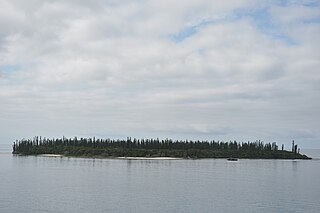
The Isle of Pines is an island in the Pacific Ocean, in the archipelago of New Caledonia, an overseas collectivity of France. The island is part of the commune (municipality) of L'Île-des-Pins, in the South Province of New Caledonia. The Isle of Pines is nicknamed l'île la plus proche du paradis.
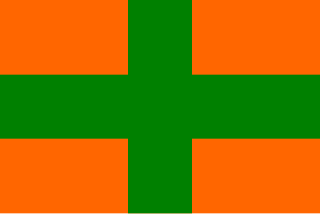
The Caledonian Union is a pro-independence and the oldest political party in New Caledonia. In the latest legislative elections of May 10, 2009, the party won around 11.65% of the popular vote, and 9 out of 54 seats in the Territorial Congress.
The Nouméa Accord of 1998 is a promise by the French Republic to grant increased political power to New Caledonia and its indigenous population, the Kanaks, over a twenty-year transition period. It was signed 5 May 1998 by Lionel Jospin, and approved in a referendum in New Caledonia on 8 November, with 72% voting in favour. Under the accord, three more referendum votes, on whether to remain a special collectivity of France or become an independent state, have been held.
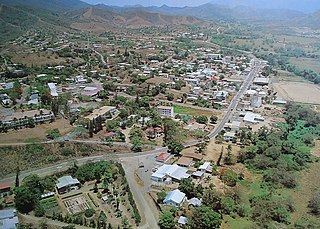
Bourail is a commune in the South Province of New Caledonia, an overseas territory of France in the Pacific Ocean.
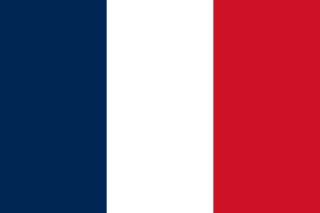
Two flags are in use in New Caledonia, an overseas territory of France. Up to 2010, the only flag used to represent New Caledonia was the flag of France, a tricolour featuring three vertical bands coloured blue, white, and red known to English speakers as the French Tricolour or simply the Tricolour. However, in July 2010, the Congress of New Caledonia voted in favour of a wish to fly the Kanak flag of the independence movement FLNKS alongside the French Tricolour. The wish, legally non-binding, proved controversial. A majority of New Caledonian communes, but not all, now fly both flags, the rest flying only the French Tricolour.

Tayo, also known as "patois de Saint-Louis", is a French-based Creole spoken in New Caledonia. It is spoken by about 3000 people in the village of Saint-Louis, about 15 km (9.3 mi) from the New Caledonian capital Nouméa. The language developed out of the contact of speakers of many different Kanak languages in the mission, and the use of French for official purposes and as the language of prestige. The language contains structural elements primarily from Melanesian languages and lexical elements mainly from French.

The National Union for Independence is a militant socialist pro-independence alliance of political parties in New Caledonia. It is a component of the Kanak Socialist National Liberation Front (FLNKS) along with the Caledonian Union.

In New Caledonia, a sui generis collectivity of France, French is the official and predominant language. The collectivity is also home to about thirty New Caledonian languages, which form a branch of the Southern Oceanic languages. They are spoken mainly by the indigenous Kanaks of the islands.
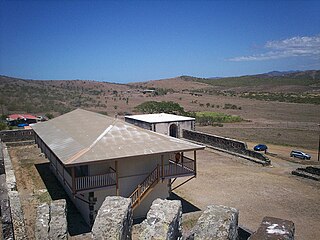
Fort Teremba is a former fort and a prison located near Moindou in New Caledonia, which came to be set up to house prisoners and the supervisory staff. The prisoners were brought to build road network Canala-Bourail-Boulouparis. It overlooks Teremba Bay, opposite the mouth of the La Foa River, 124 kilometres north of Noumea.
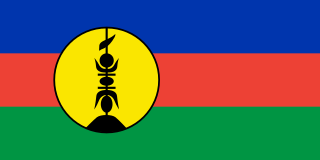
The Kanaks are the indigenous Melanesian inhabitants of New Caledonia, an overseas collectivity of France in the southwest Pacific. Kanak peoples traditionally speak diverse Austronesian languages that belong to the New Caledonian branch of Oceanic. According to the 2019 census, the Kanaks make up 41.2% of New Caledonia's total population – corresponding to around 112,000 people. The other populations are the Caldoche, who are European born in New Caledonia; the Zoreille, who were born in metropolitan France and live in New Caledonia, in addition to about 10% that are non-Kanak Polynesians and 10% that are mixed race.

An independence referendum was held in New Caledonia on 4 November 2018. Voters were given the choice of remaining part of France or becoming an independent country.

An independence referendum was held in New Caledonia on 4 October 2020. The poll was the second to be held under the terms of the Nouméa Accord, following a similar referendum in 2018.

Sonia Backès is a French politician in New Caledonia. She is the current leader of the Caledonian Republicans party and the President of the Provincial Assembly of South Province since 17 May 2019.

The penal colony of New Caledonia was a penitentiary establishment which was in operation from 1864 to 1924. Many French prisoners from mainland France were deported there.
An independence referendum was held in New Caledonia, a French territory in the South Pacific, on 12 December 2021. The vote was the third and final one to be held under the terms of the Nouméa Accord, following votes in 2018 and 2020.
James Paddon was an English navigator-merchant, sandalwood, settler, pioneer in the New Hebrides and New Caledonia.
Gil Brial is a politician from New Caledonia who is the leader of the Caledonian People's Movement.
In May 2024, protests and riots broke out in New Caledonia, a sui generis collectivity of overseas France in the Pacific Ocean. The violent protests have led to at least 13 deaths, the declaration of a state of emergency on 16 May, deployment of the French army, and the block of the social network TikTok.


